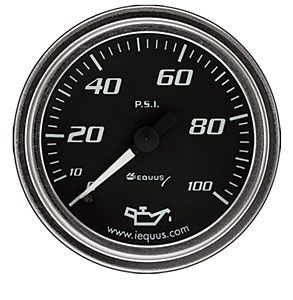Originally Posted By: Hyde244
A straight 30 weight oil is 30 weight both when it is cold (that is, at the start-up of the motor) and hot (when the motor has reached operating temperatures). 10w30 weight oil is 10 weight when cold, and 30 weight when hot. The advantage of doing this is easier starting of an engine in colder temperatures.
In order for 10w30 to achieve this, viscosity improvers (VIs) must be added to make the oil act differently. These VIs can sheer more easily than the base stock oil, which is where the reasoning comes for 10w30 not being as sheer resistant as 30 weight.
Today, 30 weight oil is really only found as recommendation for air-cooled push lawn mowers, such as my own Briggs and Stratton 4 HP mower. Since the mower is only operated in the summer, the engine does not need a lower viscosity to start, and the 30 weight oil is more sheer resistant throughout the season. However honestly, I just throw in whatever extra oil I have, such as the Edge 5w30 that is in the power at present.
Some brands of 10w-30 use no viscosity index improvers whatsoever,so your incorrect in your blanket statement.
Originally Posted By: lilrobo
i dont understand
i was told that 10w 40 is 40 cold and 10 hot .. i bought SAE 30 penn, of that is the case 40 hot is better than 30 hot no?? i did but a better gauge i should be able to tell now

You've got it backwards.
The W in 10w-40 for example stands for winter,not weight. And the first number,in this case 10 represents the cold or winter viscosity,and the 40 represents the viscosity at operating temp.
So a 10w-40 is thinner when cold vs an sae40 however at operating temp they are the same.
Another example would be in the 30 grade variant. A 0w-30 is thinner when cold vs a 5w-30 and thinner than a 10w-30,however all 3 are consistent when the oil reaches operating temp.
There was a time when I searched out 10w-30 grades for use in the summer,then changed to a 5w-30 or 0w-30 for winter.
Today I'm less interested in changing grades for the changing seasons.
Of course if I can find a 10w-30 cheaper than the others I'll use it in the summer but it depends on what I've got in my stockpile. If I've got ample 0w/5w-xx in my stash I'm not going to pay full price for a 10w-xx just to have it for summer,but again if I find a sale I'll use it.
Today's oils are fantastic and changing grades based on the season is less important when compared to 20 years ago,and today's offerings are less likely to contribute to the deposits they once did,which was a contributor to sludge and engine death.
If I lived in a climate where it was always warm I'd use whatever 10w/15w worked for my coldest temps. Less/no viscosity index improvers appeals to me,but it's in no way a deal breaker.




